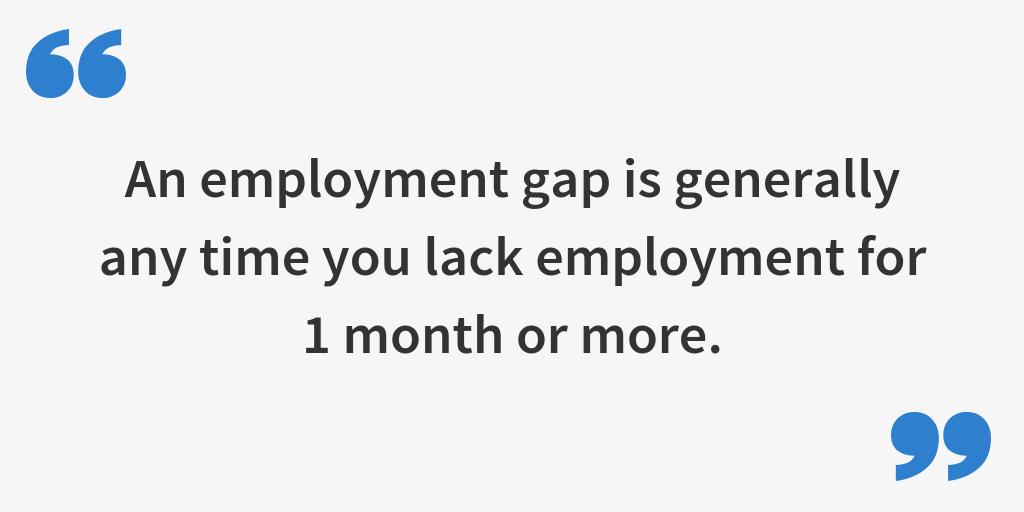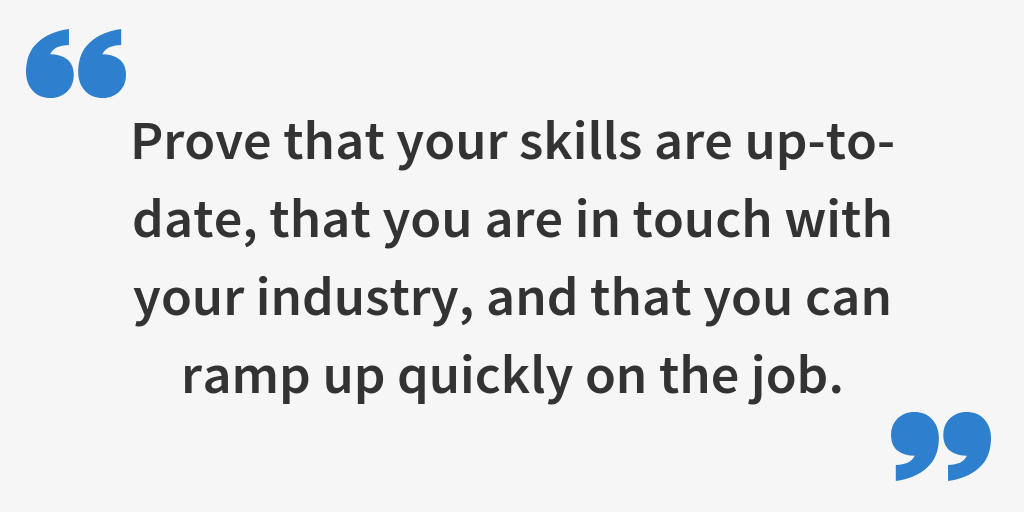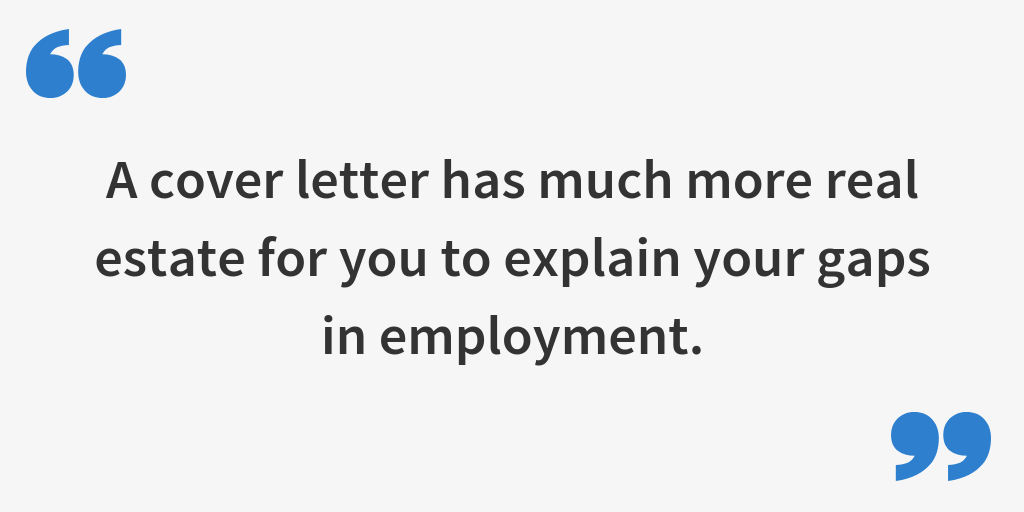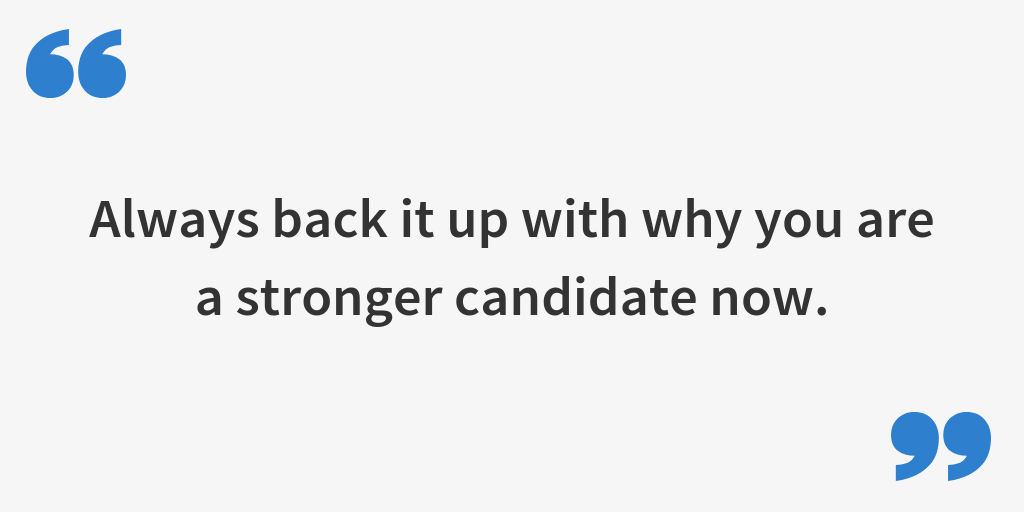Why You Should Never Lie About an Employment Gap
This in-depth job hunting article is about employment gaps and how to list unemployment on a resume. For more resume writing help, visit our job seeker resource center.
Most people have taken time off from working, at some time or another – whether it be for a few months or a few years. According to a recent study by the US Department of Labor, there are currently 6.0 million Americans unemployed or experiencing an employment gap. 1.4 million of which are categorized under long-term unemployment, which the DOL classifies as being jobless for 27 weeks or more.
If you’re worrying about how to explain gaps in employment, you’re not alone. These periods without work are something everyone worries about when searching for a new job.
This comprehensive guide will explain exactly what an employment gap is, how to smooth employment gaps over, and how to land a job, in spite of taking time off.
What Is An Employment Gap?
While there is no absolute time frame that defines a employment gap, an employment gap — which is also known as a unemployment gap — is generally any time you lack employment for 1 month or more.
Unemployment can either be involuntary (not your choice) or voluntary (you decided to take some time off).
For recruiters, employment gaps are also usually broken down into short-term, which is less than 6 months, or long-term, which is 6 months or more.
Lying About An Employment Gap
No matter what the situation is, the number one rule for job hunting is to never lie on your resume. It is crucial that you are honest about your employment gaps.
Your dates of employment will most likely be verified by an employer, either through a W-2 or a reference check, so any untruths on your resume or during an interview are grounds for disqualification.
Even if you are hired with a dishonest resume, if your employer finds out that you lied, it is cause for immediate termination of your employment. You could be fired and your professional reputation could be tarnished.
Common Reasons for Unemployment
The most common reasons for employment gaps are:
- Termination of Employment: You were laid off or quit a job and it took some time to find a new one
- Contract Employment: You typically work as a contractor and it takes some time to move from one project to another
- Maternity/Paternity Leave: You took some time off while pregnant or left to spend time with new additions to your family
- Injury or Sickness (affecting you): You were injured or critically ill and needed to take time off to recover
- Injury or Sickness (affecting someone else): Someone close to you, such as a close family member, was sick or injured and you needed to take time off to provide them with care
- Career Burn-Out: You needed to take some time off to recharge your energy after a strenuous career
- Relocation: You and/or your family moved to a new city and it took some time to settle in and find a job
- Education: You took time off to obtain a degree or to enroll in continuing education
- Professional Training: You took time off to pursue a professional training course
- Entrepreneurship: You took time off to start your own business or pursue a solo project
- Travel: You took time off to travel the world and experience other places and cultures
Why Employers Care About Employment Gaps
Employers are human beings, so they understand that personal events and circumstances beyond your control can affect you and your work history. That being said, it is still hiring managers’ job to find the top candidate to add to their team.
Whether or not it is fair, having periods of unemployment on your resume can lead employers to be concerned about your ability to perform as a reliable and skilled employee.
Here are the top three concerns employers have about candidates’ employment gaps:
- Skill atrophy
- Out of touch with the industry
- Laziness and lack of motivation
Employer Concern #1: Skill Atrophy
Skill atrophy is another way of saying that your professional skills are no longer up-to-date or useful.
Employers usually worry about skill atrophy when a job seeker:
- Has been unemployed for a long period of time
- Needs specific hard skills to fulfill the needs of the job
- Needs technical skills to use changing technology
Skill atrophy is often a concern when a job requires knowledge or competence of specific hard or technical skills, which can be forgotten or lost over time. For example, someone could forget the details of operating factory machinery if it had been years since they had last used the machine.
Hiring managers may also be worried about how current your professional skills are if the requirements of the job change quickly. For example, a software developer who has been unemployed for five years may find it difficult to apply their potentially-dated technical skills to current technology.
However, employers hiring applicants for jobs that rely on soft skills and entry-level positions are less worried about skill atrophy from employment gaps. For example, skills relating to customer service and administrative work generally stay relevant over time.
Employer Concern #2: Out Of Touch With The Industry
If you have been unemployed, especially for a significant period of time, hiring employers may be afraid that you are not up-to-date with your trade or industry.
Being out of touch with an industry is more concerning when the industry changes quickly.
However, unemployment can raise concerns for any job that requires knowledge of fast-changing technology, processes, trends, or methodologies.
Popular fast-moving industries include SAAS (Software As A Service), IT (Information Technology), Pharmaceuticals, Finance & Investing, and Technology (General).
Employer Concern #3: Laziness & Lack of Motivation
This is a concern for both short and long-term unemployment. If you have a history of leaving jobs voluntarily, especially without finding another job first, employers will look at this as a lack of motivation.
While writing your resume and cover letter, and while preparing for an interview, try to craft an image that shows employers that they have no reason to be concerned.
Although you have some employment gaps, you need to prove that your skills are up-to-date, that you are in touch with your industry, and most importantly, that you would be able to ramp up quickly on the job.
Practical Resume Solutions To Explain Employment Gaps
There are a number of practical solutions for smoothing over employment gaps on your resume. No matter which you use, always be aware of the fine line between being honest and dishonest. At the end of the day, an employer can forgive your humanity, but they are less likely to forgive a flat-out lie.
1. Chronological vs Functional Resume Formats
If you have multiple employment gaps, for example if you have taken time off between multiple jobs, it might be wise to use a functional resume format. With a functional resume format, your main resume sections are a professional summary, core competencies, and career accomplishments, and then you include a brief chronological list of your employment at the end. Your career accomplishments should be listed in order of relevance, not according to the dates that you achieved them.
The functional resume format is perfect for multiple employment gaps, because the attention is drawn to your achievements, not the dates or order of employment.
2. Reworking Your Employment Dates
Let’s start off with clarifying that you should never extend your dates of employment to cover employment gaps. You should also never list that you are still at a company when your employment has already ended.
However, it is acceptable to use years instead of months in your professional experience section. This generally works best for employment gaps of 1 years or less.
For example, you could write your previous work experience (and period of unemployment) in your resume as:
ABC Corporation, Project Manager (2017 – 2018)
XYZ Corporation, Project Manager (2013 – 2017)
Instead of specifying the exact months that you worked and did not work:
ABC Corporation, Project Manager (December 2017 – December 2018)
XYZ Corporation, Project Manager (August 2013 – January 2017)
While this is effective for your resume, once you get brought in for an interview, always be honest if asked for the months of employment.
You also need to keep the dates consistent, using either the month and the year or just the year, for the rest of your work experiences.
3. Write Time Off As A Job
No matter what the reason was for taking time off, you most likely used some valuable skills along the way.
A great option for your employment gaps are to use a chronological resume format, like these traditional or true red resume templates, and write your employment gaps in your experience section in the format that you have written your professional positions.
Here is a sample resume excerpt explaining an employment gap due to travel:
Southeast Asia & Australia, World Travel (December 2017 – October 2018)
After completing an intensive school program, took 10 months off to expand my mindset and to gain a broader understanding of the world’s landscapes, economy, and cultures. During my travel, the following skills were sharpened:
- Time Management: Arranged and executed complex travel itineraries, crafted daily and weekly to-do lists, created smart goals, ensured key adventures were accomplished within a limited timeframe
- Negotiating: Completed strenuous daily negotiations with vendors in Southeast Asia, handled high-pressure last minute schedule changes and cancellations
- Cross-Cultural Interactions: Dealt with extreme cultural differences, gained an understanding of different mindsets and lifestyles
- Languages: Learned and practiced key words in multiple languages
4. Lump Positions Together
If you are a freelancer, or work a number of short-term contracts, it is a good idea to lump your positions together under one work experience.
Don’t worry if you had some time in between projects. You can list the experience together, including your job title, clients, and project descriptions.
Here is a resume sample of how to list an employment gap for freelance work or self-employment:
Graphic Designer (January 2000 – Present)
Clients: ABC Corporation, XYZ Unlimited, ABC Restaurant
As a Graphic Designer, completed complex design projects for a variety of clients. Each project lasted between 1 month to 6 months. Key projects include:
- Designing digital collateral for a holiday social media campaign, including custom illustrations using Adobe Illustrator
- Crafting print collateral, including flyers, stickers, and banners, bringing the design from conceptualization through print management
- Created print and digital collateral for a start-up company, including the creation of brand and style guidelines
5. Indicate Contract or FTE
For many professions, like information technology and business consulting, jumping from contract to contract is the norm.
This also means that you will inevitably have time in between each contract as you identify and negotiate your next engagement.
To make sure this is obvious to hiring managers, list contract or FTE (Full-Time Employee) next to each job title.
6. Add School, Professional Development, and Certifications
If you took time off to pursue a degree, additional training, or certification, list it as you would a job under your professional experience section.
This means you would include the institution, the degree or sessions that you attended, and the top skills learned.
Here is an example of how to list unemployment while continuing your education in your resume:
ABC University, Bachelor’s Student (August 2014 – May 2018)
As a senior-level professional who previously left school early to support a family, it was always important to return to school and complete my bachelor’s degree. After a successful 10 years in the insurance industry, I decided it was time, so I enrolled in the bachelor’s program at ABC University where I studied accounting. Relevant coursework included:
- Managerial Accounting: Financial data analysis, interpretation and reporting, profit & loss statements, accounting for decision making
- Auditing: Financial document review processes, compliance, external regulations and laws
- Accounting Information Systems: Tools, technology, and procedures used to monitor accounting tasks and processes
- Generally Accepted Accounting Principles: The widely-accepted framework used to guide accounting practices and procedures
7. Create an Official Business for Your Side Work, Freelancing Gigs, or Solo Project
If you took some time off to start your own business, to do some freelancing, or to pursue a solo project, make sure it sounds official.
Avoid simply writing ‘freelancer’ or ‘entrepreneur’. Instead, create a business name for your venture and list all of your experience under that company in your professional experience section.
When creating a company name, avoid using your first or last name, like ‘John Doe Consulting’ or ‘John Doe Computer Repair’. Using your name makes the position come across as less official and usually evokes the image of you doing a few odd jobs out of your living room.
Instead, create an official-sounding company name. You don’t have to worry about filing for an actual LLC (unless you want to), but it is smart to create a company LinkedIn page, website, portfolio, and official email signature. Any collateral you can create that makes your work seem more credible, the better.
8. Explain Your Layoffs
Unfortunately, there comes a time in most of our lives when we have been laid off from a job. This is particularly difficult for more senior-level professionals who typically have a harder time finding a new job, either because they are at a very high pay grade or because there are too many young graduates eager to come in and learn the job for half the rate.
Employers will empathize with this, as they have probably been there before, so don’t be afraid to include that you were laid off under your work experience. It’s even better if you can provide a brief description about a reorganization or a massive layoff.
You can list an employment gap due to layoffs like this in your resume:
ABC Corporation, Program Director – Civil Affairs (February 2000 – December 2017)
Laid off during a department-wide downsizing of 20 people
Using Cover Letters To Explain Gaps in Employment
Your resume is a good place to start, but a cover letter has much more real estate for you to explain your gaps in employment. While employment gaps should definitely be mentioned, avoid your explanation taking over your entire cover letter, instead of focusing on your selling points and positive attributes.
When explaining your employment gaps, be honest, direct, and professional. If you took time off to raise your children, say it, but make sure to include what skills you practiced while doing so.
Put a positive spin on your employment gaps by explaining why your experience makes you an even stronger candidate than you were before. For example, if you were burnt out from a hectic career, make sure you explain how your time off revitalized your mind and made you more eager than ever to give your career 150%.
You should also think back to earlier in this article when we discussed the reasons why employers care about career gaps. Your cover letter is the perfect place to convince a hiring manager that your skills are still sharp, that you are up-to-date with your industry trends, and that you are anything but unmotivated and lazy.
Explaining Unemployment In A Job Interview
Too many people come into an interview fumbling to explain their time off. If you have a career gap on your resume, anticipate that it will get brought up in an interview, and make sure you have a short, concise, and honest explanation to give.
In addition to explaining your time away, always back it up with why you are a stronger candidate now. Emphasize the things you have learned, how you kept your skills sharp, and why you are still the perfect fit for their role.
Another great reason for explaining extended time in between jobs is because you strongly believe in being selective about your roles.
It makes you look way better to say “I am looking for a career and a company to call home, so I am not willing to quickly accept the first job that comes my way” rather than “I have applied to every company in town but no one will hire me”.
Make Sure Your Personal Brand Is Consistent
Most employers will look at your LinkedIn profile, job references, and personal website or portfolio (if applicable) while considering you for a job, so after crafting your resume, make sure all of your other branding materials match.
If you choose to only include the years under the experience section on your resume, make sure your LinkedIn profile follows the same format.
When building your resume, especially after taking some time off, this resume builder is the perfect place to begin. The van Deco and Three Blocks templates are ideal for using a functional versus chronological layout.
While using the resume builder, you can easily use years, instead of months, for your employment sections. You can also use the work experience sections to list out the skills you learned during your time off, just like you would for your professional experience.
The great thing about the resume builder is that you can save your progress and come back to finish it later once you have your thoughts together. And best of all, unlike other resume builders, it’s completely free!



